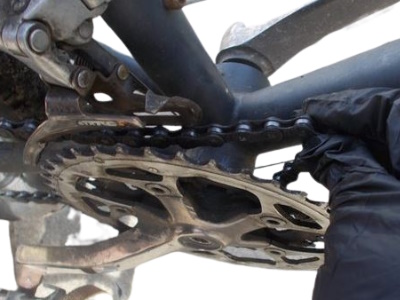
My bike is derailing, what to do and how to avoid the problem?
One of the recurring problems with a bicycle is the derailment of the chain. A bicycle that derails is unpleasant to use. This can be dangerous depending on when your chain jumps. This small bike breakdown is easily repaired but it can become a bigger problem when it happens regularly.

How does a chain derail?
The chain of the bicycle makes it possible to transmit the energy and the speed, produced par the cyclist when he is pedaling, at the rear wheel. So the bike will be able to move forward. The chain of a bicycle is made up of different links that must stay linked together.
To facilitate pedaling and allow the cyclist to save his forces, bicycles are generally equipped with a gear system. The cyclist decides on the gear change by activating the lever or the handle on the handlebar. The gears will then change thanks to the rear derailleur which will place the chain on a new sprocket. In the event of a fall, poor gearing or a poorly maintained chain, your bike may derail. In this case, and if the derailment is occasional, the repair is simple and quick.
Why is the bike derailing?
"Derailing" means that your chain links are no longer aligned with the teeth of the chainrings or sprockets. Thus, it no longer causes the transmission of your bike, which is an obvious problem. It usually "falls" to one side or the other of the crankset, or to one side or the other of your freewheel/cassette. Pure happiness is when it derails on the spoke side of the rear wheel, and it gets stuck. It’s complicated to get it out and we get our hands full. This is one of the reasons why we advise you to always have a cloth in the little kit of the perfect cyclist.
Except for this specific and hated case where the chain is stuck between the back of the freewheel and the spokes (happiness), it's quite easy to put the chain back on. ®ne. It will be a question of putting it back on the sprocket/chainring closest to where it derailed. Simply because your derailleur will be in that position and if you try to put it back somewhere else, it won't let you. So don't touch your shift levers yet. You will shift the derailleur with the shifter once the chain is replaced.
To facilitate pedaling and allow the cyclist to save his forces, bicycles are generally equipped with a gear system. The cyclist decides when to change gear by activating the lever or the handle on the handlebar. The gears will then change thanks to the rear derailleur which will place the chain on a new sprocket.

What to do when the bike derails?
Step 1: To make the repair more convenient, we advise you to turn your bicycle over so that the chain is more accessible. Lay it upside down with the handlebars and saddle on the ground.
Step 2: To return the chain to its correct position, first locate which sprocket the chain is placed on. Then you can base yourself on the speeds present on the handlebars. This will let you know which sprocket the chain needs to be put back on. The right handlebar grip or grip indicates the rear sprockets of the bike while the left handlebar grip indicates the front sprockets. You should know that the 1 speed of the right lever indicates the largest rear cog while the 1 speed of the left lever indicates the smallest front cog. All you have to do is put the chain back on the correct sprocket as indicated on the handlebar levers.
Step 3 : In order to put the chain back on easily and not break it, it must be loosened. To do this, you can operate the rear derailleur by pushing it. Your chain is now more flexible. While keeping the derailleur pushed, grab the chain with the other hand. You can put it on the right sprocket, making sure that it is well positioned in the teeth of the sprocket. Once in place, you can release the derailleur.
Step 4 : By pushing the pedals forward you will check that your chain is well placed and that the transmission is working properly. This also allows you to finalize the correct installation of your bike's chain.
This method is a succinct repair that is fine if your bike has derailed exceptionally.
If you are subject to regular derailments, we advise you to carry out more extensive repairs starting with par identify the origin of the problem. Find our advice on "my bike derails regularly".











